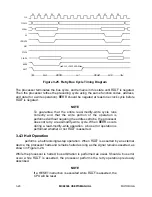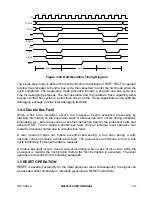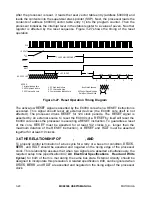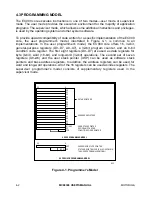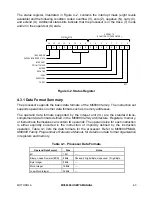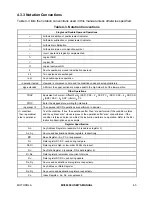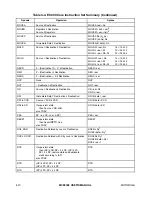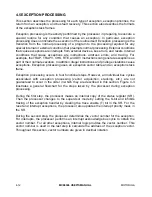
4- 4
MC68306 USER'S MANUAL
MOTOROLA
4.3.2 Addressing Capabilities Summary
The EC000 core supports the basic addressing modes of the M68000 family. The register
indirect addressing modes support postincrement, predecrement, offset, and indexing,
which are particularly useful for handling data structures common to sophisticated
applications and high-level languages. The program counter indirect mode also has
indexing and offset capabilities. This addressing mode is typically required to support
position-independent software. Besides these addressing modes, the processor provides
index sizing and scaling features.
An instruction’s addressing mode can specify the value of an operand, a register
containing the operand, or how to derive the effective address of an operand in memory.
Each addressing mode has an assembler syntax. Some instructions imply the addressing
mode for an operand. These instructions include the appropriate fields for operands that
use only one addressing mode. Table 4-2 lists a summary of the effective addressing
modes for the processor. Refer to M68000PM/AD,
M68000 Family Programmer’s
Reference Manual, for details on instruction format and addressing modes.
Table 4-2. Effective Addressing Modes
Addressing Modes
Syntax
Register Direct Addressing
Data Register Direct
Address Register Direct
EA=Dn
EA=An
Absolute Data Addressing
Absolute Short
Absolute Long
EA=(Next Word)
EA=(Next Two Words)
Program Counter Relative Addressing
Relative with Offset
Relative with Index and Offset
EA=(PC)+d16
EA=(PC)+d8
Register Indirect Addressing
Register Indirect
Postincrement Register Indirect
Predecrement Register Indirect
Register Indirect with Offset
Indexed Register Indirect with Offset
EA=(An)
EA=(An), An ¨ An+N
An ¨ An–N, EA=(An)
EA=(An)+d 16
EA=(An)+(Xn)+d 8
Immediate Data Addressing
Immediate
Quick Immediate
DATA=Next Word(s)
Inherent Data
Implied Addressing
Implied Register
EA=SR, USP, SSP, PC,
VBR, SFC, DFC

